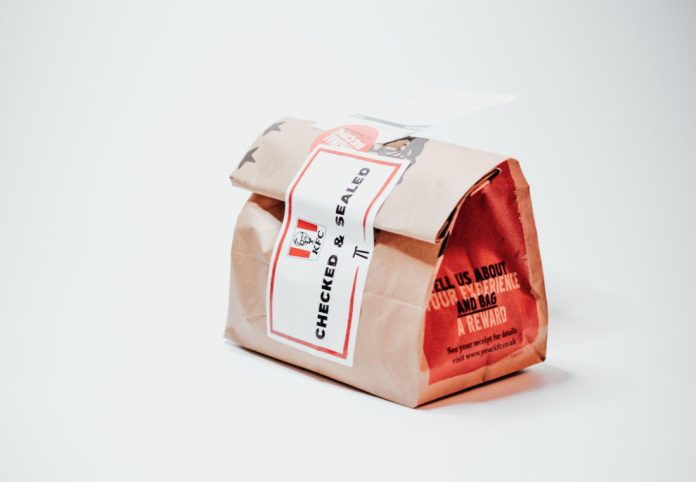Today’s packaging materials are expected to meet high standards, and businesses must tick all the boxes when choosing packaging with a variety of considerations in mind, such as safety, practicality, sustainability, plus product appeal. Moreover, the choice of packaging can be a crucial element for a brand’s successful marketing. Modern packaging comprises custom box designs and packing tape with proper branding in an attempt to raise the level of consumer expectations, which is an additional thing for businesses to manage and meet consumer benchmarks, in addition to securing or preserving a product from damage.
Let’s look at some of the factors that every business needs to consider while choosing the right product packaging.
Why Emphasize Appropriate Packaging?
The first impression really is the final impression, as they say. Customers receive their requested items in their original packaging, which establishes the logistics partner’s initial impression. If you deliver their goods in sloppy packaging, you risk losing one potential consumer in addition to damaging your brand.
Consider a situation in which you are selling a smartphone that is packaged in an unattractive way, such as in a ridged box with a few additional layers for added protection. It is very likely that the phone will be threatened by threats of a cracked screen, a damaged body, or many other problems in such a scenario. Think how the purchaser’s experience will be impacted by the delivery; extremely dissatisfying, right?
As a result, if the consumer receives their goods in excellent condition with no leak, spillage, or damage, they will always be a loyal customer, making it necessary for logistics companies to take care of this element effectively.
Here, a different aspect also becomes crucial. Hand-selected packages are then transported to various locations after leaving their respective courier hubs. It is extremely likely that the goods you are delivering will damage other products that the distributor is carrying as well if it has not been wrapped appropriately. For more information, check out Air Sea DG, they manufacture and supply UN-approved packaging for hazardous goods all over the world.
The significance of order packaging also extends beyond consumer pleasure and safety standards. Additionally, it aids in minimizing weight differences. It has frequently been observed that handling weight disparities caused by inadequate packaging consume the majority of a shipping company’s time.
These types of mistakes can hamper your operations and cause problems in real-time. Plus, it will most likely take a toll on your sales, too. However, these issues can be successfully avoided if orders are wrapped appropriately and weight measurements are verified.
Business Safety Advice for Product Packaging
Here are 5 crucial safety guidelines that companies should have in mind while packaging products for shipment and handling.
1. Packaging Using Multiple Layers
Products are often packaged in three layers for distribution. First, there is the packaging that warehouses utilize when receiving several products in large boxes for shipment later. The distribution packing is the following layer, and this is what a consumer would see when it arrives at their door. The specific item itself is wrapped up in the consumer packaging, which is the last type. The idea is to offer the product many layers of protection; you may choose to include additional layers.
2. Wrap Each Item Individually
It is crucial for each product to have its own unique layer of protection when several products need to be packed together in a package. Repeated handling will raise the possibility that something may break when it gets to its destination.
3. Use Shock-Resistant Packaging Materials and Properly Cushion Your Product
If you’ve ever opened a package and seen packing peanuts or foam-based constructions, you’ve already seen this example in action. These components enable the product(s) to remain supported in the box and shield it from any unexpected shocks. They also maintain their resistance to the product’s weight by maintaining their shape and resisting compression.
When several items are contained in a single box, these materials are extremely helpful. The products are shielded from one another and any potential external causes by maintaining a space of two inches between each item as well as away from the box sidewalls.
4. Avoid Using Too Many Labels
If you’re shipping something that could be harmful to the recipient or user, they need to be aware of what’s inside and exactly how to handle it. If you put several labeling on your carton at once, it will be tough for them to figure this out. Have one or two labels that specify all the recipient needs to know to make the process simpler and safer for them.
It is acceptable to use one label for any additional boxes that are included with the product. Only include the handling and safety instructions that are absolutely necessary for the recipient to be aware of.
5. Use Climate and Contaminant-Resistant Packaging Materials
It is possible that the outer packing, cushioning substances, or the item itself might experience some unfavorable alterations if your shipment occurs to be sent over a route that experiences fluctuations in humidity, temperature, or pressure. The product could deteriorate and the padding might lose its resilience.
Businesses that routinely receive these materials must likewise follow this rule. In order to prevent them from spreading across your plant, you will need to develop a particular technique that enables you to test and analyze for typical packaging contaminants. To achieve this, testing must be performed by specialists who are competent and certified, and preventative measures must be put in place to stop chemical contaminations from happening.
Additional Important Things to Think About When Choosing Packaging Materials
The packaging of an item was found to be just as important to consumers as the brand, according to research analyzed. This demonstrates unequivocally the importance of a product’s packaging for improving customer satisfaction, preventing operational delays, and minimizing shipment damage.
-
Cost-effective and Simple to Use
You will have to take extra time to get things ready for sale if the packaging is complicated. Customers dislike unnecessary and complicated packaging, so keep things simple with “pull open” heat-sealed boxes and discrete, transparent shrink wrap. Make sure it doesn’t impede or disrupt your logo or branding if the packaging isn’t linked with it. This is especially critical for items like book covers, which must be safeguarded without covering up any significant information.
-
Use Only Standard Sizes and Shapes
Save money by using common sizes and shapes that container manufacturers can easily produce. While unusual sizes and shapes can draw attention to the store, the extra money spent and difficulties encountered during packaging manufacture are not worth the trouble.
You can have flexibility and ease during handling, storage, and transportation by selecting conventional forms and sizes. You might be able to place smaller orders and save money if you avoid bespoke packaging alternatives. Instead, invest those savings in wise design decisions that can increase your brand’s visibility and effect.
-
Developing Sustainability Initiatives
As consumers have grown more ecologically conscious over the past few years, sustainable packaging has gained increasing attention. There have been significant advancements made in the creation of recyclable packaging materials that are attractive and useful as a result of the rising demand for eco-friendly packaging materials. Particular sectors, such as e-commerce companies, have been more responsive to the change and have quickly changed their packing materials to be more environmentally friendly. Utilizing plant-based polymers, recycling corrugated fiberboard, and reducing material waste are a few examples.
If you’re designing your packing materials with your consumers in mind, any custom packaging professional you work with should have ecologically sustainable materials available and should show a genuine commitment to maintaining reduced carbon footprints in their system.
If price is a concern, keep in mind that buyers are willing to pay more if products are packaged using eco-friendly materials, according to studies. Therefore, it’s well worth the investment.
-
Transportation Method
One of the most crucial things to take into account when selecting a packaging material is how the item will be transported. The predicted method of product security depends on the manner of transit.
For goods being delivered by air, for instance, the products will be safeguarded taking into account atmospheric fluctuations and turbulence. Packages that are being sent by ground transportation must be packed such that they can withstand the harsh road and physical handling.
Parting Words
Only half of the battle is won by using the appropriate packaging materials for the task. The second half entails taking precautions to guarantee safety requirements are met while the product is being handled by forces outside of your control.
Over time, paying close attention to your methods for packing goods will help you avoid wasting a lot of time and money that you shouldn’t have had to spend in the first place.



































